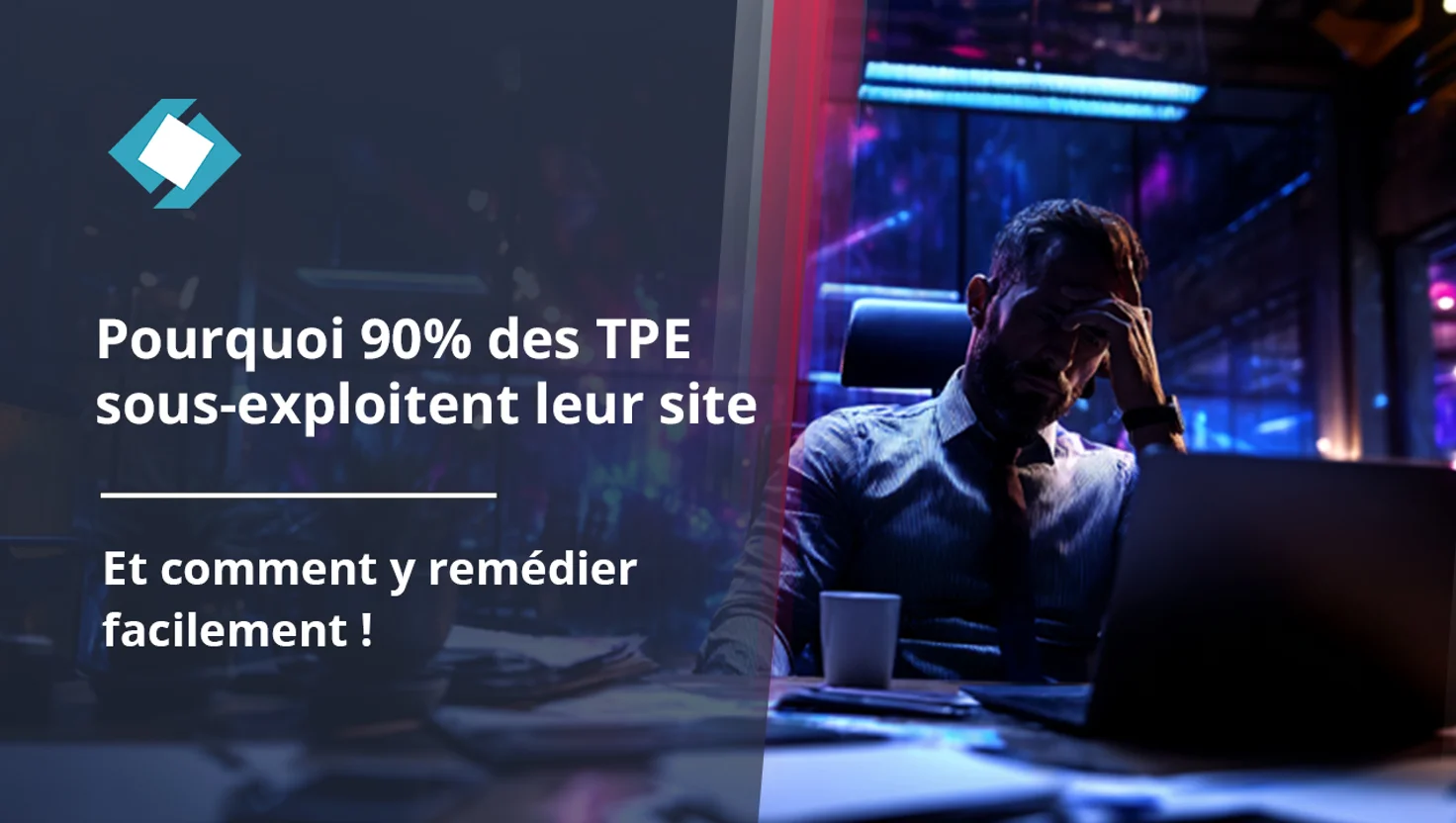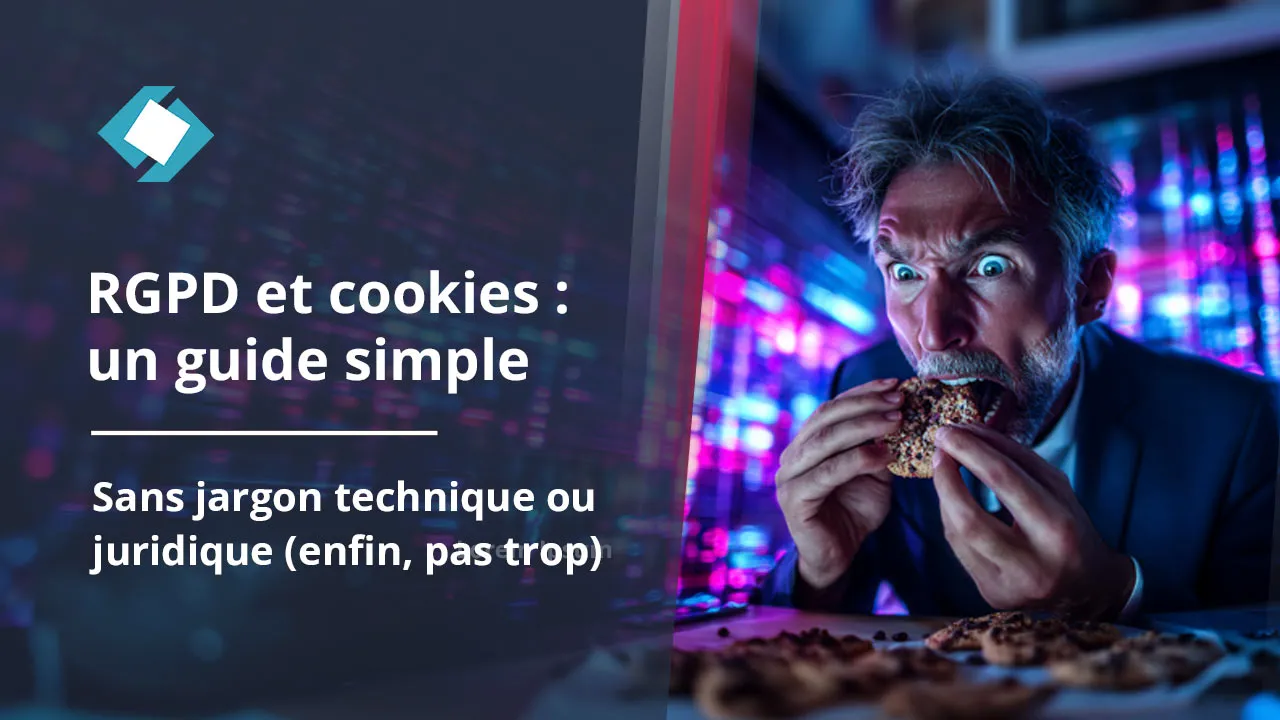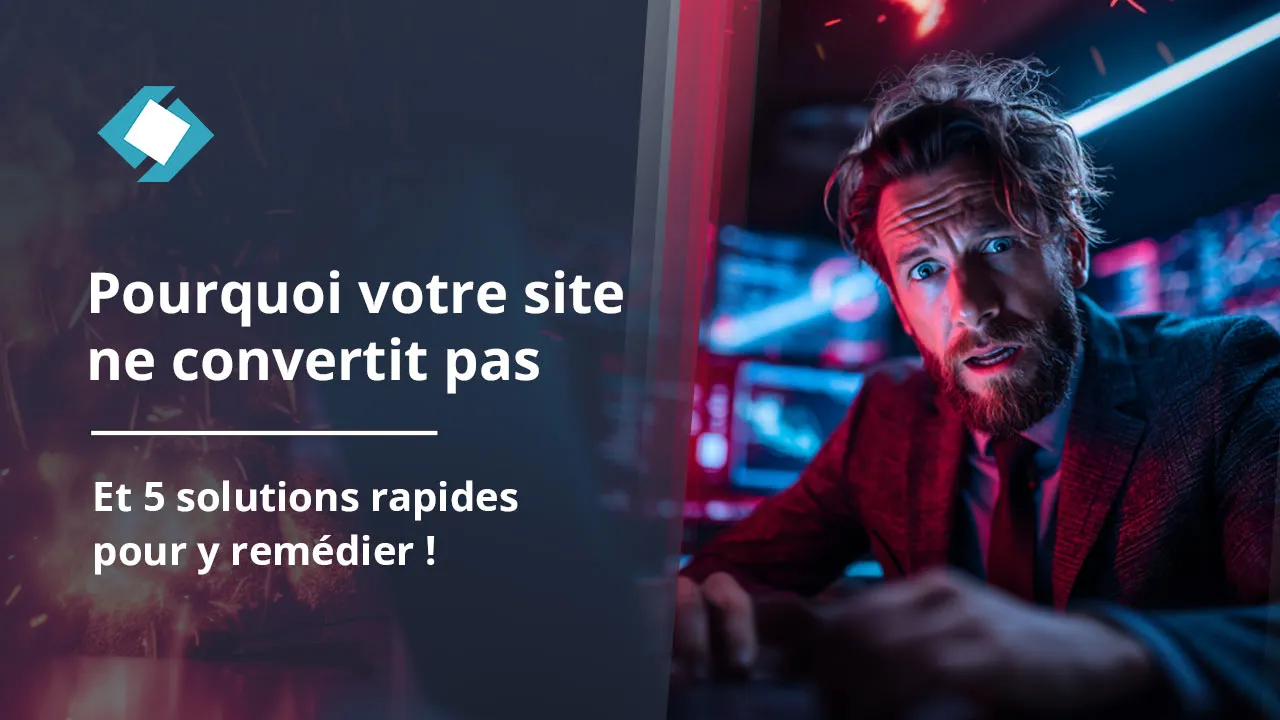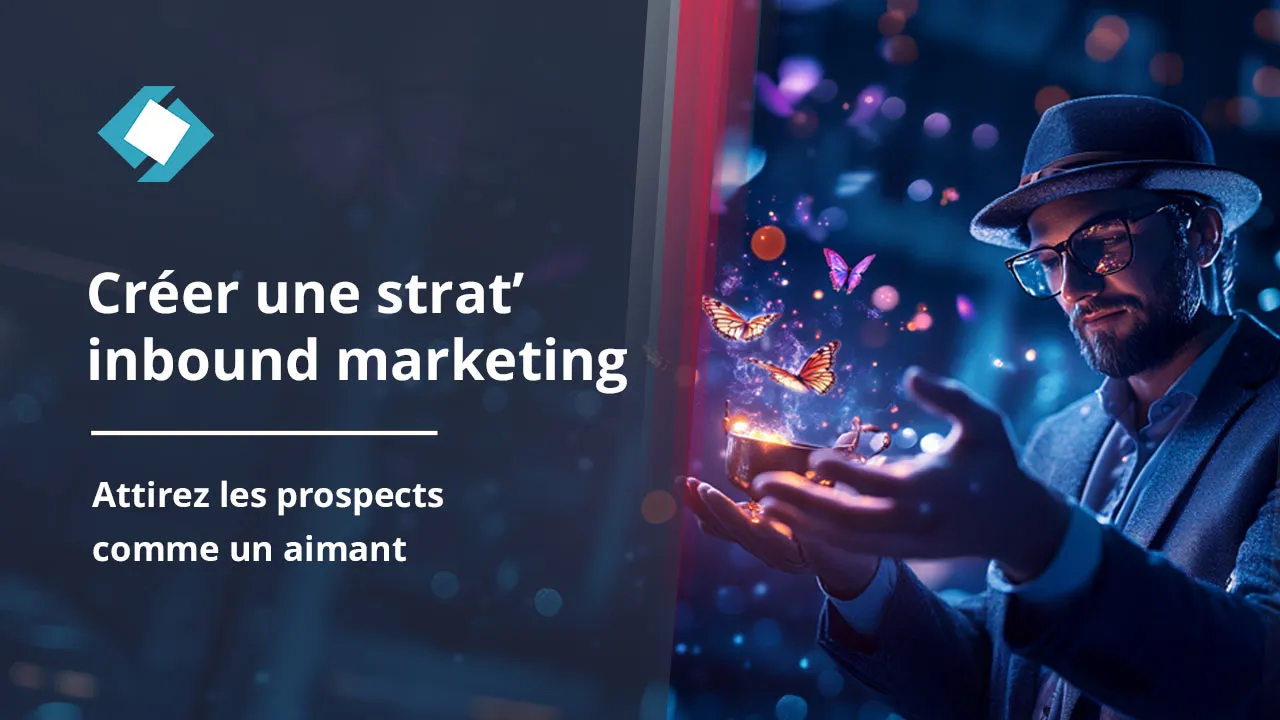You’ve invested in a website for your small business. Congratulations, you’re part of the 65% of French companies who’ve taken this step. But how many qualified prospects does it generate each month? How many actual customers come from it?
If these questions make you uncomfortable, you belong to the 90% of small businesses whose website isn’t fulfilling its mission. And this isn’t inevitable.
Here’s the brutal truth: according to the France Num 2025 Barometer, while 78% of business owners recognize digital benefits, the majority continues treating their website like a frozen digital brochure. A “Closed” sign on a storefront in a busy street.
In this article, I reveal the 4 symptoms of an underutilized website, the real reasons for this failure, and most importantly, how to transform your site into a commercial opportunity machine. With recent data, concrete examples, and zero bullshit.
The “useless showcase website” syndrome
Let’s be frank. You paid a provider to create your site. It’s been live for 6 months, a year, sometimes 3 years. You might get a few visits per month. But concretely? Radio silence.
Welcome to the very exclusive (yet massive) club of showcase websites that serve no purpose. According to the latest France Num data, 92% of small businesses own their domain name. Magnificent. Except owning a website and exploiting it are completely different things.
Field experience taught me one thing: a website without strategy resembles a store in a deserted street, lights off, with a poorly taped “We’re Open” sign on the door. Nobody enters.

The 4 symptoms of an underutilized website
Symptom #1: Traffic desert
Your site receives a few dozen visits per month. You, your family, some lost curious visitors. Zero SEO strategy, no structured referencing. Result? You’re invisible on Google for your industry keywords.
The numbers are clear: 63% of small businesses work on their natural referencing, but this percentage has decreased by 6 points in one year. In other words, while some progress, others abandon the race.
Symptom #2: Conversion black hole
No contact forms filled out. No incoming calls from the site. Visitors arrive, vaguely browse 2-3 pages, and disappear within seconds. Catastrophic bounce rate, no defined journey, no clear call-to-action.
According to the 2025 Barometer, only 37% of small businesses offer online sales or appointment booking. The remaining 63% leave this market to large groups. Huge missed opportunity.
Symptom #3: Digital mummy
The last blog post dates from 2021. Photos are outdated. Information isn’t current. 43% of small businesses update their content less than once a month. Some, never.
Here’s where it gets interesting: Google favors active sites. A frozen site = a dead site in search engines’ eyes. You lose positions every month without even realizing it.
Symptom #4: Blind piloting
You don’t know how many people visit your site. Impossible to know which pages work. No Google Analytics configured, or installed but never consulted. 59% of small businesses don’t track (or barely track) their online commercial performance.
Imagine driving a car without a dashboard. You don’t know your speed, fuel level, or direction. This is exactly what you’re doing with your website.
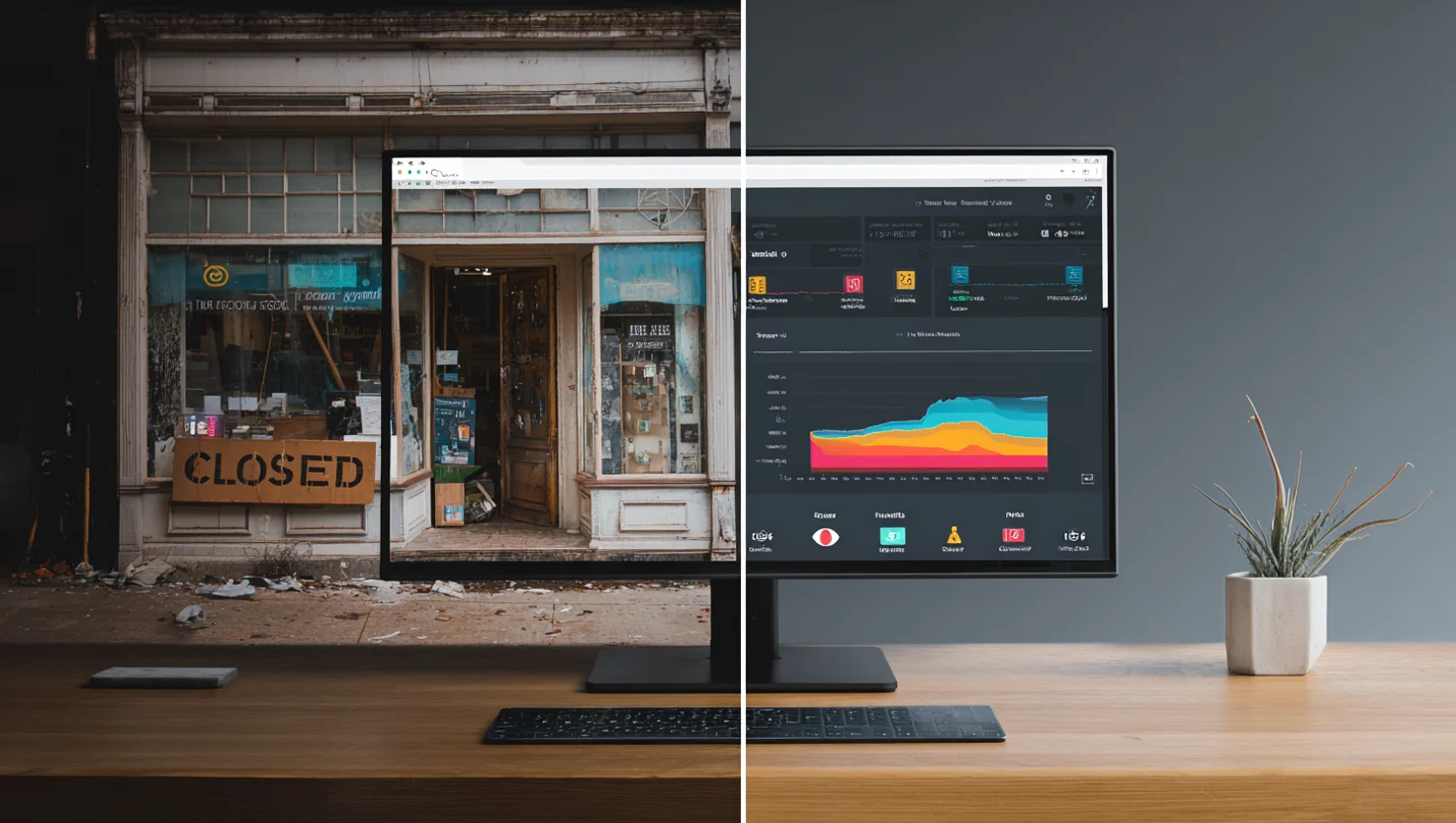
Why does this happen to the best small businesses?
It’s not about competence. Or motivation. It’s about priorities, knowledge, and false beliefs.
The time shortage trap
You’re already managing 50 things simultaneously: production, clients, accounting, HR, prospecting, deliveries… The website always comes after the urgent. Result? It stays in a corner, frozen, while you handle daily operations.
In reality, 44% of business owners dedicate one hour per day or more to their online presence. But conversely, 24% spend less than one hour per month. An abysmal gap that explains result differences.
The reality of the profession: those who succeed understood they must either regularly block time or delegate intelligently. There’s no third option.
The expertise gap that paralyzes
You’re an expert in YOUR profession. Not in digital marketing, SEO, conversion optimization, or analytics. Normal. Nobody can know everything.
But here’s the trap: instead of learning or delegating, many business owners do nothing. Out of fear of making mistakes, losing money, or simply because they don’t know where to start.
Data reveals that 70% of small businesses claim to have access to necessary digital skills. But beware of the illusion: the majority relies on external providers. Internalizing skills remains a major challenge.
Empty provider promises
“Your website will change everything.” How many times have you heard this promise? Your web provider sold you a “turnkey” site. Then disappeared. No content strategy, no SEO, no conversion optimization.
Let’s flip the situation. A website is like a physical shop: building it isn’t enough. You then need to animate it, bring in traffic, convert visitors into customers. Otherwise, you just have a beautiful empty showcase in a deserted neighborhood.
From my experience, providers who promise miracles without discussing editorial strategy, referencing, or analytical tracking create the most disappointment. The website is only the beginning, never the end.
The fear of being wrong that freezes
So you do nothing. You wait. You tell yourself “later, when I have time”. You postpone until tomorrow. And meanwhile, your competitors advance.
The numbers confirm it: AI adoption has doubled in one year among small businesses (26% already use it). While some test, automate, and optimize, others remain frozen by fear of the unknown.
My analysis reveals a simple truth: those who test, even making mistakes, progress 10 times faster than those waiting for the perfect solution. Immobility costs more than imperfect action.
The 5 underutilized (and profitable) levers
Let’s move to concrete solutions. Here are the 5 levers that 90% of small businesses ignore but radically transform website results.
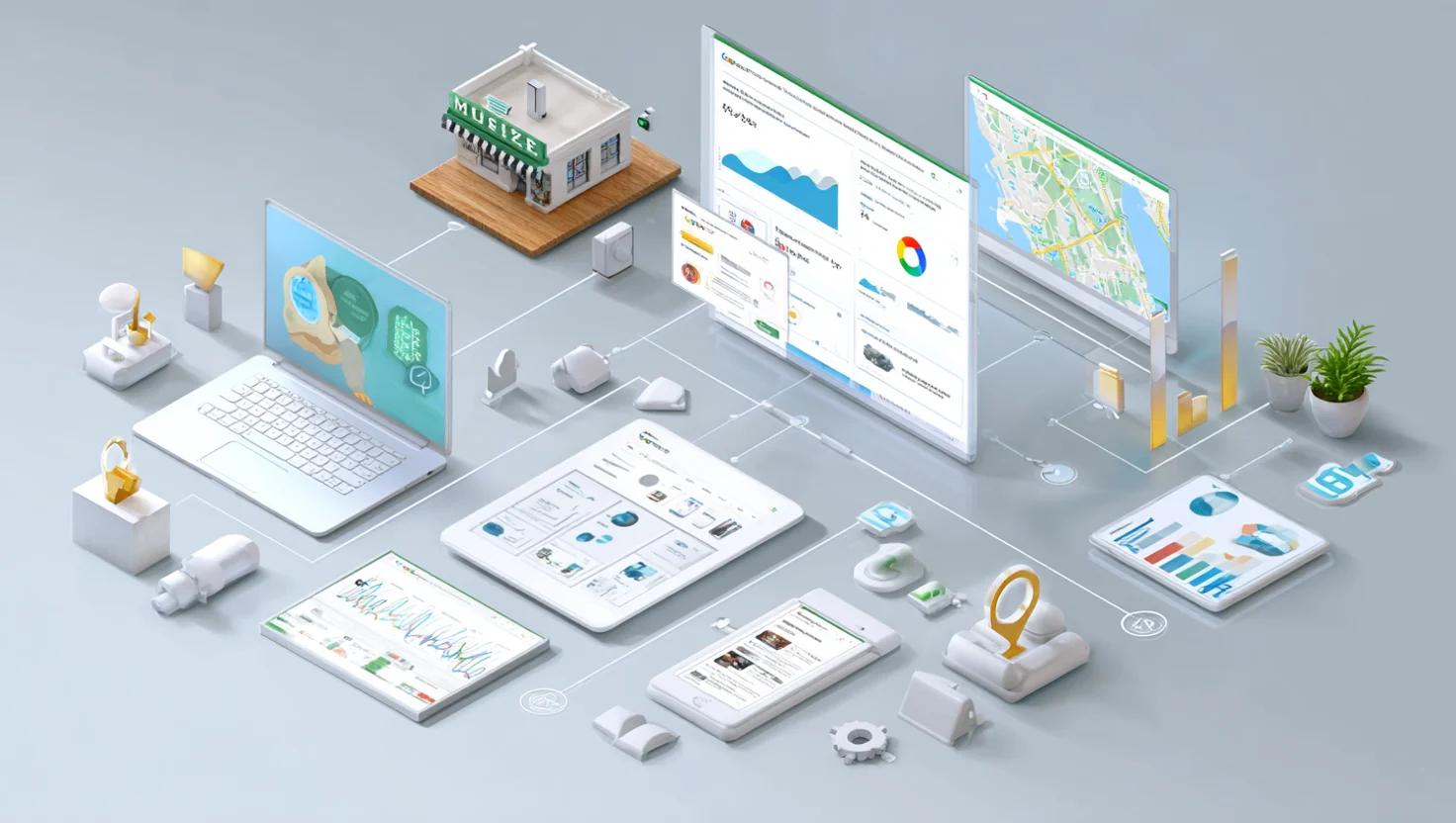
Lever #1: Local referencing (the unknown goldmine)
Your best asset. If you have a local activity (plumber, restaurant, carpenter, coach, consultant…), local referencing is your golden ticket. Yet only 47% of small businesses have a page in online directories.
Concretely, what does this mean? Optimize your Google My Business listing, appear in “near me” searches, collect customer reviews, and dominate your geographic area.
Field example: A carpenter in Toulouse (let’s call her Marie) optimized her Google My Business listing, created a portfolio gallery, and set up a simple quote form. Result after 8 months? +300% qualified quote requests, #1 position for “carpenter Toulouse”, and +180% revenue.
But beware of the trap: many create their Google My Business listing… then abandon it. No regular photos, no review responses, no updates. Result? You exist, but you’re invisible.
Lever #2: Intelligent data exploitation
Let’s talk numbers. 64% of small businesses exploit their financial data, and 53% customer and sales data. Impressive, right? Except this data remains descriptive. Almost nobody uses it to predict, anticipate, or steer.
Here’s what it changes in practice: imagine knowing which pages of your site generate the most requests, which content attracts your best clients, which keywords truly convert. You stop guessing, you start knowing.
Tools exist, they’re accessible, often free (Google Analytics, Search Console, Hotjar…). The problem? 59% of small businesses don’t track their online performance. It’s like having a car dashboard but never looking at it.
My advice: start simple. Install Google Analytics correctly. Define 3-4 key indicators (visits, conversion rate, traffic sources, popular pages). Check them once a week. Adjust accordingly. Nothing magical, but it changes everything.
Lever #3: Content that attracts (not decorates)
The brutal reality: your homepage with 3 generic paragraphs serves no purpose. Your competitors have exactly the same. Google doesn’t care. Your prospects either.
What works? Content that answers concrete questions. “How to choose a reliable plumber?”, “What budget for renovating my kitchen?”, “The 5 mistakes to avoid when creating your website”…
Small businesses that succeed regularly publish (at least once a month) useful content, structured, SEO-optimized. Not to look pretty, but to attract qualified traffic.
Here’s where it gets interesting: natural referencing costs €0 in advertising. You invest time (or delegate), and you harvest free traffic for months, even years. Unbeatable ROI.
Lever #4: Calls-to-action that convert
How many small business websites have I seen with a magnificent homepage… and no clear action button? Hundreds. Maybe thousands.

Your visitor arrives on your site. They like what they see. And then? What do you want them to do? Call? Fill out a form? Download a guide? Book an appointment?
If you don’t explicitly guide them, they leave. Simple as that.
Sites that convert have clear, visible calls-to-action, repeated on every strategic page. “Request a free quote”, “Book my consultation”, “Download the complete guide”… No mystery, just clarity.
And no, it’s not my obsessive side talking: conversion studies show that a well-placed CTA can increase conversions by 30 to 200%. Worth 10 minutes of attention, right?
Lever #5: Automation that frees time
26% of small businesses already use AI. This figure doubled in one year. Chatbots to answer customers 24/7, writing tools for content, automated quotes, intelligent appointment management…
Concrete example: a plumber uses a chatbot to qualify emergencies 24/7 and automatically schedule interventions. Result? No more missed calls, better customer satisfaction, less stress.
Automation doesn’t replace humans, it frees time for what truly matters: professional expertise, customer relationships, strategic development.
And contrary to popular belief, AI is no longer reserved for large companies. Tools accessible to small businesses multiply, often with free or small-budget versions.
The performing website checklist
Enough talking about problems. Let’s take action. Here’s your concrete roadmap to transform your underutilized site into a commercial machine.
Phase 1: Foundations (weeks 1-2)
Ruthless audit of your current situation. Take 2 hours, a coffee, and honestly answer these questions:
- How many visits per month do you receive? (If you don’t know, install Google Analytics now.)
- How many qualified prospects per month? (Calls, forms, quote requests…)
- Is your site responsive (mobile-adapted)? 85% of traffic comes from mobile for some sectors.
- Do your pages load quickly? (Test on PageSpeed Insights, free.)
- Do you have an optimized Google My Business listing? With recent reviews?
This diagnosis takes 2 hours maximum. But it reveals exactly where you’re losing money.
Phase 2: Quick wins (weeks 3-4)
Immediate impact actions that cost nothing (or almost):
- Optimize your Google My Business listing (photos, hours, description, categories).
- Add 3-4 clear calls-to-action on your site (visible buttons, direct message).
- Create a “Customer Reviews” page with your best testimonials.
- Install a chat tool (Tawk.to is free) or a simplified form.
- Verify your site displays correctly on mobile.
Budget needed? €0. Time needed? 4-6 hours maximum. Potential ROI? +50% conversions easily.
Phase 3: Content strategy (months 2-3)
Here, we build long-term. Identify the 10 questions your customers ask most often. Transform each question into an 800-1200 word blog article, SEO-optimized.
Publish one article per week (or per month if time is short). Regularity > quantity. One article per month for 12 months beats 12 articles published at once then nothing.
Small businesses applying this method see their traffic multiply by 3 to 5 in 6-12 months. Without advertising. Just useful content, well-structured, regularly published.
Phase 4: Continuous optimization (months 4-6)
Now, we refine. Analyze your data every week. Identify what works (popular pages, traffic sources, performing content) and what doesn’t.

Test variants: change your calls-to-action, test different formulations, modify your forms, adjust your content. Continuous optimization separates average sites from performing ones.
Small businesses following this approach see improvements of 15-30% every quarter. Little by little, it becomes enormous.
The real cost of inaction
Let’s talk money. How much does a website that does nothing really cost you?
According to the France Num 2025 Barometer, 42% of small businesses invested more than €1000 in their digital projects in 2024. Some go up to €5000 or more. Necessary investment, no doubt about that.
But here’s the real question: if your site generates zero prospects, zero sales, zero calls… what’s the ROI of this investment? -100%. You threw money out the window.
The calculation nobody makes
Imagine your site, properly optimized, generates 5 qualified prospects per month. Of these 5 prospects, you convert 2 into customers (modest 40% conversion rate).
If your average basket is €1500, that’s €3000 additional revenue per month. Or €36,000 per year. Generated by your site.
Now compare this figure with your site optimization cost: let’s say €3000 initial investment + €200/month maintenance/content. ROI achieved in 2 months. Total profitability from month 3.
Yet 90% of small businesses don’t make this calculation. They see the cost (€3000), not the return (€36,000/year).
What your competitors are doing meanwhile
While you wait, your competitors test, optimize, progress. AI adoption doubled in one year, referencing professionalizes, automation tools democratize.
Each month passing without action = one more month of delay. And in digital, the delay widens exponentially.
Small businesses who understood this invest regularly, test constantly, adjust quickly. Result? They capture a growing market share while others watch the train pass.
Where to start concretely?
Stop the paralysis. Here’s your action plan for the next 7 days.

This week: the 3 priority actions
Action 1 (2 hours): Audit your current presence
Open Google Analytics (or install it if not done). Note: visits/month, popular pages, traffic sources, bounce rate. Then type your activity + your city on Google. Where do you appear? Page 1, 2, 10? Not at all?
This simple observation will tell you exactly where you stand.
Action 2 (1 hour): Update Google My Business
If you don’t have a Google My Business listing, create it now. If you have one, update it: recent photos, correct hours, optimized description with your industry keywords, precise categories.
Action 3 (1 hour): A clear call-to-action
Add a clearly visible button on your homepage. “Request a free quote”, “Book an appointment”, “Call us now”… One message, one button, one clear action.
These 3 actions take 4 hours maximum. And can radically change your results within 30 days.
Next month: scaling up
Once foundations are laid, build on this foundation:
- Week 2: Write your first blog article (answer ONE frequent customer question).
- Week 3: Optimize your main pages (titles, descriptions, structure).
- Week 4: Configure complete analytical tracking and define your KPIs.
One month is enough to go from “useless showcase site” to “site starting to work for you”. No miracle, just method.
Resources to go further
You’re not alone. Resources exist to support you:
- France Num offers free guides, webinars, and an Activator network to support you.
- Google My Business offers free training to optimize your listing.
- Chambers of Commerce regularly organize digital workshops for small businesses.
And if you prefer delegating? Choose a provider who talks strategy, not just design. Who explains referencing, conversion, analytics. Who commits to measurable results.
Conclusion: 2025, the digital awakening year
The numbers are clear: 78% of business owners see benefits in digital. But the majority still massively underutilizes their website.
Here’s the good news: you have all the tools, all the knowledge, all necessary resources to change this. Now.
Your website isn’t a cost. It’s an investment that can return 10, 20, 50 times its initial stake. Provided you activate it, animate it, optimize it.
So the real question isn’t “Can my site work?”. It’s “When do I start making it work?”.
My final advice? Start small. Test one action this week. Measure results. Adjust. Repeat. In 6 months, you’ll be among the 10% of small businesses who truly exploit their website.
And trust me, it changes everything.





